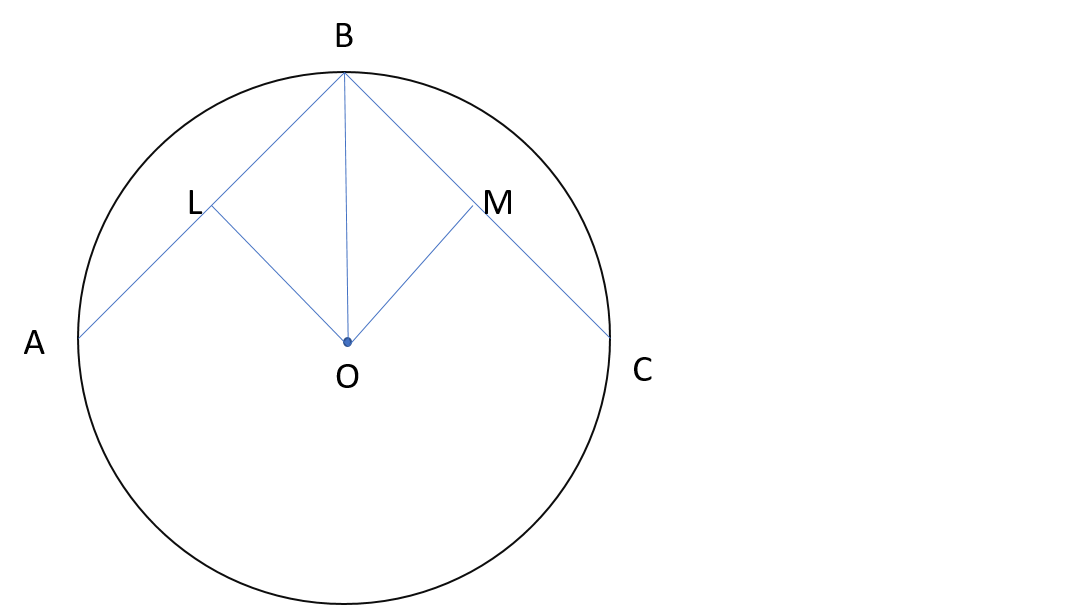0=1 due to a polygon?
For any sided regular polygon inscribed in a circle of radius , our objective is to calculate the perimeter of the polygon.

The figure represents the given situation. is the center of the circle and , are edges of a regular polygon. and are perpendiculars drawn on line segments and respectively. Since perpendiculars from center bisect the chord, thus we have,
Therfore by RHS Criteration of congruency, .
Thus by CPCT, we have
For any regular polygon of sides, each angle is given by .
Therefore, . Thus .
Clearly,
and thus,
Since it is a regular polygon,
Perimeter =
But as approaches infinity the polygon tends to coincide the circle in which it is inscribed. Thus in that case the perimeter of the polygon becomes equal to the circumference of the circle in which it is inscribed.
Also As approaches infinity,
becomes approximately .
Also comparing the formula we obtained in equation 1 , to the circumference of circle,
From (2) and (3),
Dividing by on both sides we get,
Find the mistake!
Easy Math Editor
This discussion board is a place to discuss our Daily Challenges and the math and science related to those challenges. Explanations are more than just a solution — they should explain the steps and thinking strategies that you used to obtain the solution. Comments should further the discussion of math and science.
When posting on Brilliant:
*italics*or_italics_**bold**or__bold__paragraph 1
paragraph 2
[example link](https://brilliant.org)> This is a quote# I indented these lines # 4 spaces, and now they show # up as a code block. print "hello world"\(...\)or\[...\]to ensure proper formatting.2 \times 32^{34}a_{i-1}\frac{2}{3}\sqrt{2}\sum_{i=1}^3\sin \theta\boxed{123}Comments
Hint: There is something wrong with infinity
Log in to reply
You should make this into a problem.